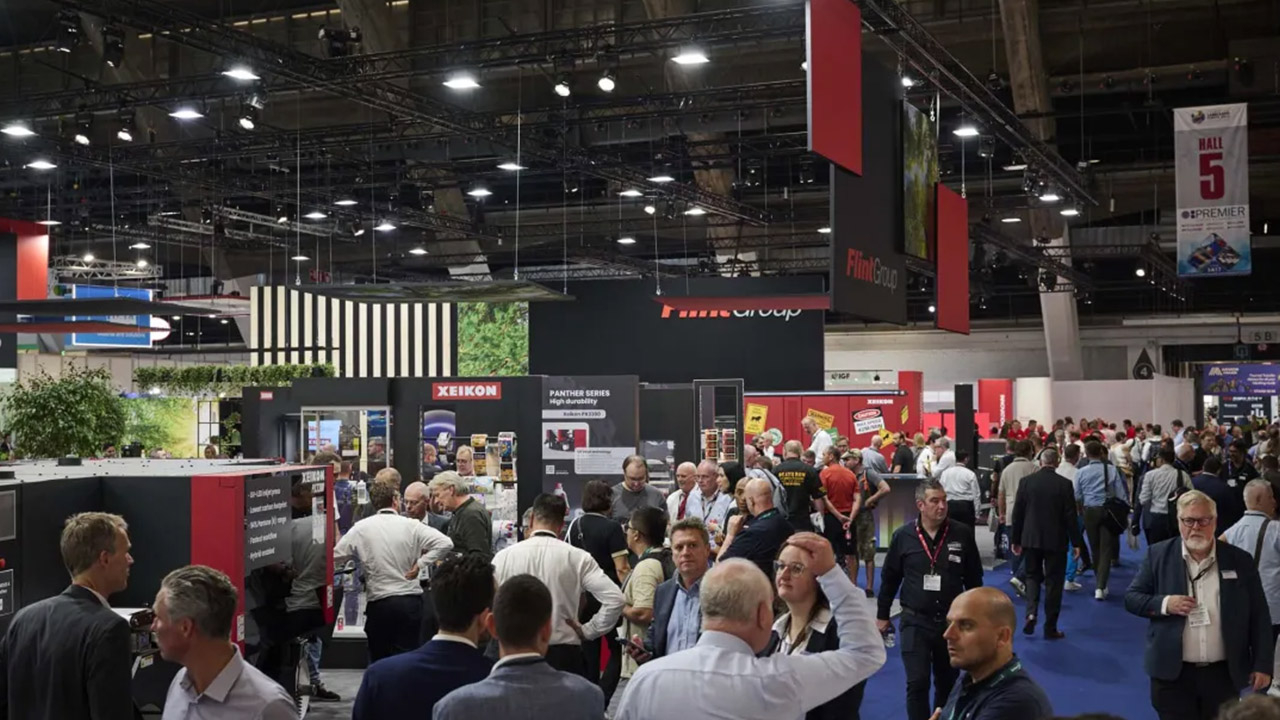Automation and sustainability key themes at Labelexpo Europe 2025
Automation and sustainability should be at the top of every label and packaging converter’s agenda.

A previous Labelexpo Europe
With the launch of the European Union’s circular economy program, including PPWR (Packaging and Packaging Waste Regulations), sustainability has moved to the top of the label and package printing industry’s list of priorities. And not only in Europe. Across the world, governments are starting to legislate on a wide range of sustainability issues like single-use plastics and recycling targets, while converters working for global brands anywhere in the world will need to meet their increasingly stringent sustainability mandates.
So this is the perfect time for Labelexpo Europe 2025 to announce a major focus on PPWR, which takes center stage at the label and package printing industry’s leading global showcase.
Speakers with expert knowledge of PPWR requirements, deadlines and trends will speak on the show floor as one of four days of expert talks, which will also include sessions on automation (closely linked to sustainability as we will see below), folding cartons, flexible packaging and smart labeling.
While many of the detailed requirements and timelines for PPWR remain unclear, the broad outlines are coming into focus. Labels are of critical importance to successful implementation of two PPWR requirements for ‘upcycling’ and multi-trip containers. The circular economy requires that packaging materials can be cleanly separated, and after processing, return to the same point in the value chain. This means, for example, that the label adhesive must remove cleanly from the container; it means UV ink needs to be separated from PET shrink sleeves so both container and sleeve material can be cleanly recovered.
The label also needs to provide information on the recyclability of each component of the container or pack. In the case of compostable materials, for example, consumers will need to determine if there are local industrial composting facilities available. Without that, the pack will not pass the circular economy upcycling test. The label will also provide the mechanism to activate post-consumer automatic materials sorting systems via machine-readable codes, as projected in the Holy Grail program.
Upcoming Digital Product Passport (DPP) legislation will mandate every physical product to have a ‘digital twin’ in the Cloud containing information on packaging materials, disposal advice, chain of custody and more. This will require the addition of an RFID inlay or QR codes, both of which require converters to invest in additional equipment and expertise. DPP is first rolling out through the apparel and electronics sectors, with additional rollouts to follow.
Turning to multi-trip refillable packaging, the requirement will again be for primary labels to wash off so the container can be cleaned before refilling and shipping back to retail stores or online customers. But since the EU requires that a container must make multiple round trips to count as ‘refillable’, there will also need to be a machine-readable permanent label with an adhesive strong enough to withstand washing, refilling and transit.
There are important sustainability issues that will be addressed in both flexible packaging and folding cartons at Labelexpo Europe 2025, reflecting the show’s move toward a wider package printing and converting event.
Laminations are a key issue. Expert speakers will examine current progress towards mono-materials, using barrier coatings as a substitute for laminate layers. What shelf-life and product protection characteristics are possible and where will we still require physical barriers? Coating technology that de-laminates pouch flexible packaging at the recycling stage will also be discussed.
Labelexpo Europe 2025 will also include a PPWR trail so the exhibitors demonstrating technologies can be easily found.
Automation supports sustainability
At first glance, automation has little to do with sustainability. In fact, the two are closely linked.
Firstly, automation directly supports label and packaging converters in complying with sustainability legislation and mandates.
Going forward, label and package print/converters will be expected to provide a wide range of sustainability metrics to brand customers and to state, federal and EU regulators.
Converters will need to automate the collection of carbon emissions data. Automated sensors on the most energy-intensive components of the press and converting equipment — servo motors and UV/drying lamps — are already a reality, along with the ability to send that information to Cloud servers and distribute securely over blockchain networks.
Brand owners will be asking converters for information on the composition of the packaging they supply. This will require that sustainability information is automatically collected across the supply chain, from suppliers of inks, plates, materials, pressroom chemicals, and so on. Without automation, this will simply not be possible.
Automation = Sustainable businesses
Automation is also central to making label and package printing businesses sustainable in the long run. Automation will be absolutely essential to address the shortage of skilled labor available to the print industry.
At Labelexpo Europe 2025, we expect to see major advances in machine automation. We already see a great deal of automation in the flexo process from makeready to automated monitoring of print pressure, tension, registration and color. A move towards Extended Color Gamut printing — keeping the same seven CMYK+OGV inks in the press to simulate Pantone colors — allows the automation of color management at the prepress stage.
On the rotary offset side, companies like Rotatek are now exploring AI modeling of ink-water balance to reduce setup times and waste levels.
On converting machines, we will see at Labelexpo Europe 2025 increased automation of a range of processes from knife setting to varnish plate engagement and camera-based QC through to turret rewinds. These machines will increasingly be set up and managed remotely, programmed via JDF/JMF, taking that responsibility away from machine operators. Format changes will be triggered by unique QR codes printed at the heads of new jobs either by a digital press or a digital print head added to a conventional press.
Digital embellishment using UV inkjet heads to jet coatings and adhesives allows a range of decorative processes to be automated, including cold foiling, tactile finishes and simulated embossing.
We will also see further developments in laser die cutting and in high-speed semi-rotary conventional die cutting with auto plate ejection. This has now reached the point where the only manual process is loading the flexible die.
Expect also to see at Labelexpo Europe 2025 increasing use of AI, particularly in the inspection and QC arena and in factory management.
Automation of the factory workflow helps businesses become more sustainable in many different ways.
Automation of inventory management, including reordering, has been with us for some time, but automation is now extending to workflow management powered by AI. This means, for example, automatic routing of jobs through the factory from prepress, through printing, converting and QC, with resources allocated according to a range of factors such as run length, converting and decoration requirements, machine and operator availability.
Robotics is another technology we will increasingly see at Labelexpo. For label converters, robots are targeted at automating the packing of finished rolls, typically taken from a turret rewinder. Going forward we are likely to see more of the operations around the press impacted by robotics, including the automated mounting of sleeves and tooling. Expect to see concept machine designs at Labelexpo Europe 2025.
The growing convergence of AI and automation will ultimately lead to more sustainable businesses for converters. It will dramatically reduce the need for operators with traditional print skills, making plants more efficient and creating more value-added jobs in managing automation, all of which will make label and package printing operations more profitable.
Labelexpo Europe 2025 will be dedicating a day of expert talks on the show floor addressing these opportunities.
Stay up to date
Subscribe to the free Label News newsletter and receive the latest content every week. We'll never share your email address.


